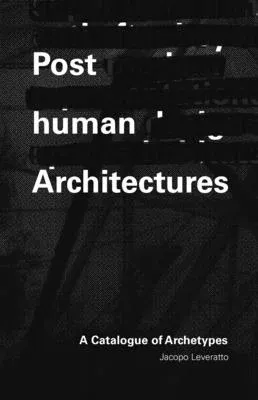Jacopo Leveratto
(Author)Posthuman Architecture: A Catalogue of ArchetypesPaperback, 2 November 2021

Qty
1
Turbo
Ships in 2 - 3 days
Only 2 left
Free Delivery
Cash on Delivery
15 Days
Free Returns
Secure Checkout

Print Length
239 pages
Language
English
Publisher
Applied Research & Design
Date Published
2 Nov 2021
ISBN-10
1954081219
ISBN-13
9781954081215
Description
Product Details
Author:
Book Format:
Paperback
Country of Origin:
US
Date Published:
2 November 2021
Dimensions:
21.59 x
13.97 x
2.03 cm
ISBN-10:
1954081219
ISBN-13:
9781954081215
Language:
English
Location:
Novato, CA
Pages:
239
Publisher:
Weight:
498.95 gm